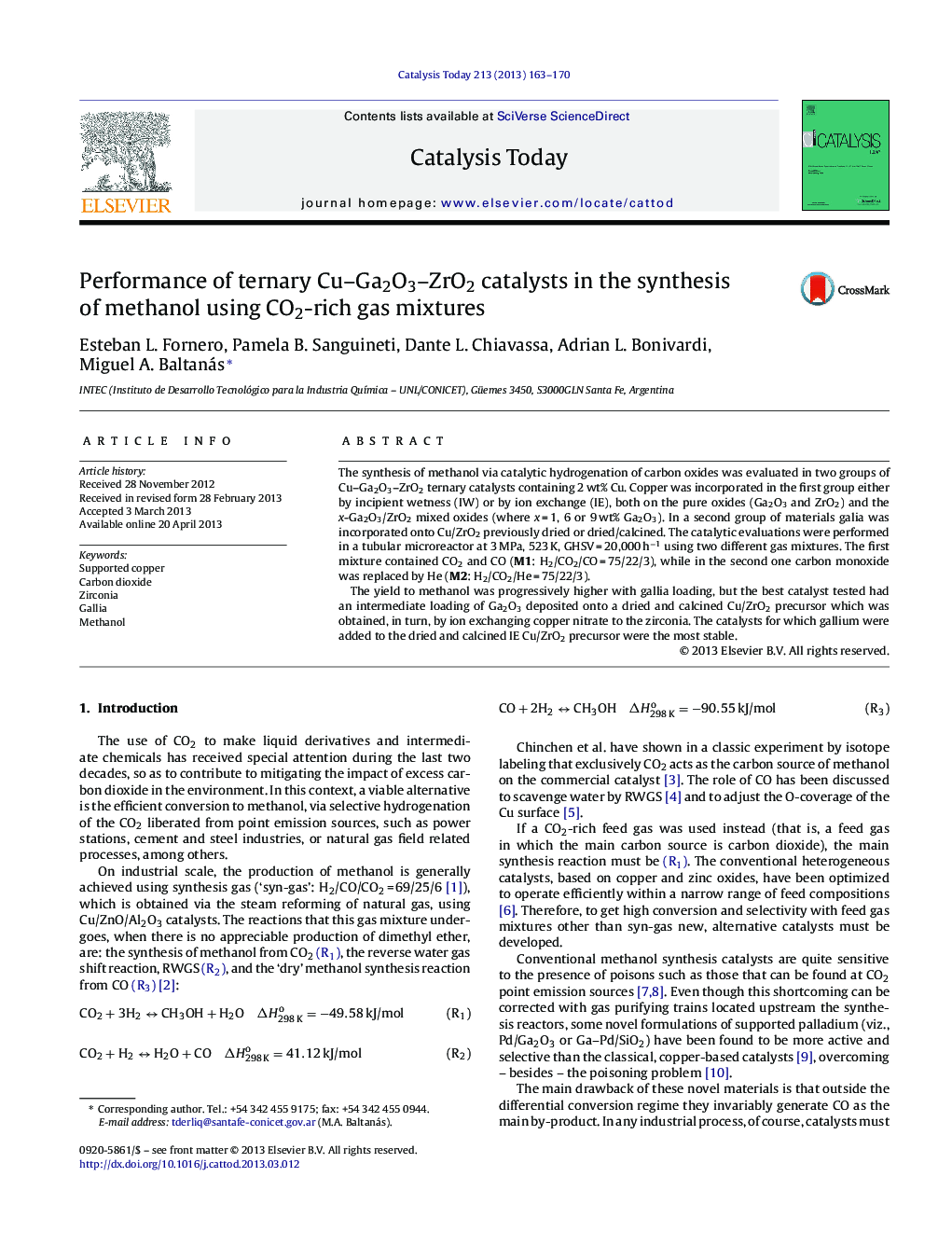| Article ID | Journal | Published Year | Pages | File Type |
|---|---|---|---|---|
| 54788 | Catalysis Today | 2013 | 8 Pages |
•Cu–GaOx/ZrO2 shows a fair performance for methanol synthesis from H2/CO2/CO mixtures.•Zirconia must be the base-support to obtain these active materials.•Highly selective and stable preparations need the three components: Cu–Ga–Zr.•High Ga/Cu atomic ratios do not improve substantially the activity to methanol.•High Ga/Cu atomic ratios lead to better methanol yields (selectivity increases).
The synthesis of methanol via catalytic hydrogenation of carbon oxides was evaluated in two groups of Cu–Ga2O3–ZrO2 ternary catalysts containing 2 wt%.Cu. Copper was incorporated in the first group either by incipient wetness (IW) or by ion exchange (IE), both on the pure oxides (Ga2O3 and ZrO2) and the x-Ga2O3/ZrO2 mixed oxides (where x = 1, 6 or 9 wt% Ga2O3). In a second group of materials galia was incorporated onto Cu/ZrO2 previously dried or dried/calcined. The catalytic evaluations were performed in a tubular microreactor at 3 MPa, 523 K, GHSV = 20,000 h−1 using two different gas mixtures. The first mixture contained CO2 and CO (M1: H2/CO2/CO = 75/22/3), while in the second one carbon monoxide was replaced by He (M2: H2/CO2/He = 75/22/3).The yield to methanol was progressively higher with gallia loading, but the best catalyst tested had an intermediate loading of Ga2O3 deposited onto a dried and calcined Cu/ZrO2 precursor which was obtained, in turn, by ion exchanging copper nitrate to the zirconia. The catalysts for which gallium were added to the dried and calcined IE Cu/ZrO2 precursor were the most stable.
Graphical abstractFigure optionsDownload full-size imageDownload high-quality image (61 K)Download as PowerPoint slide
